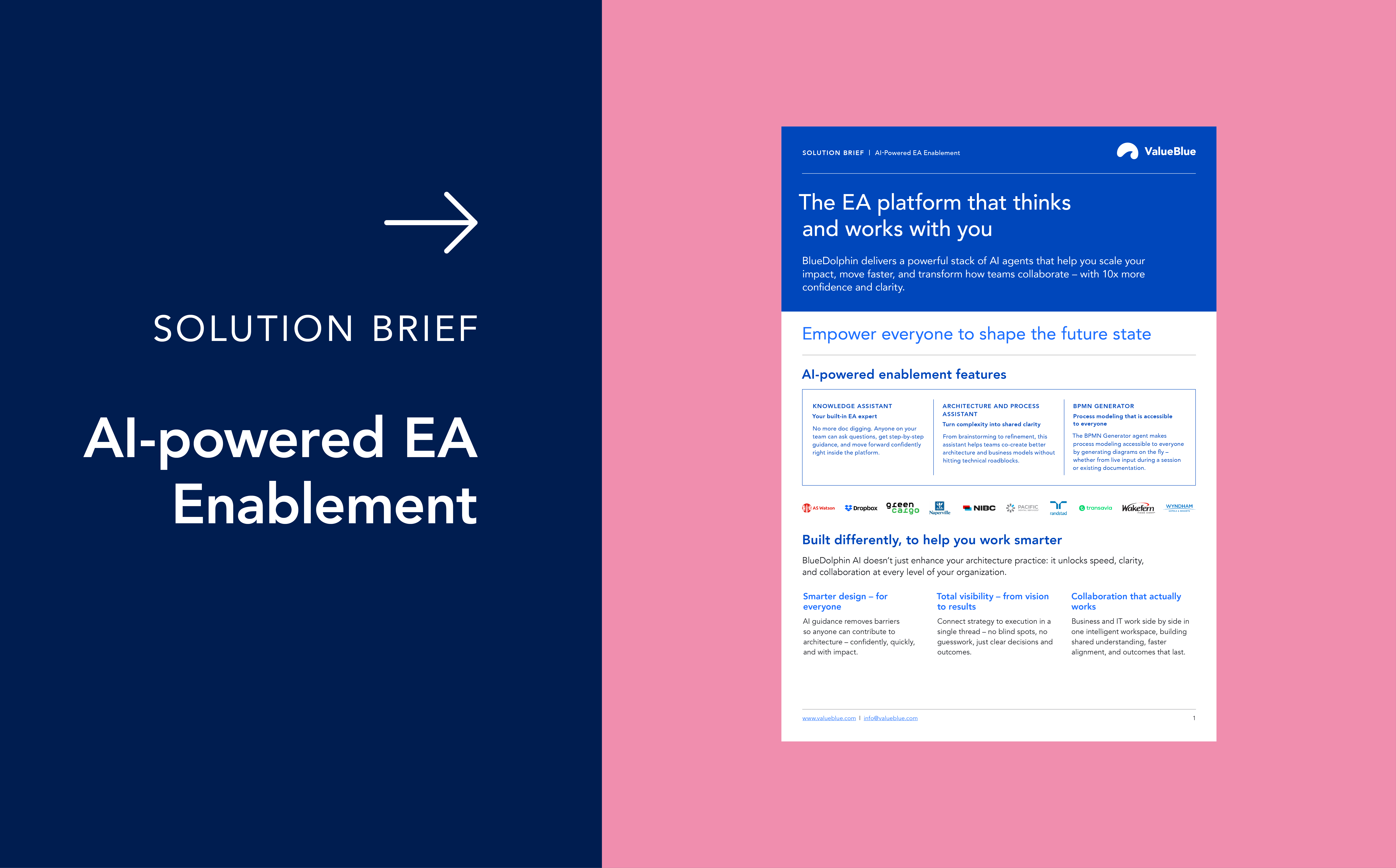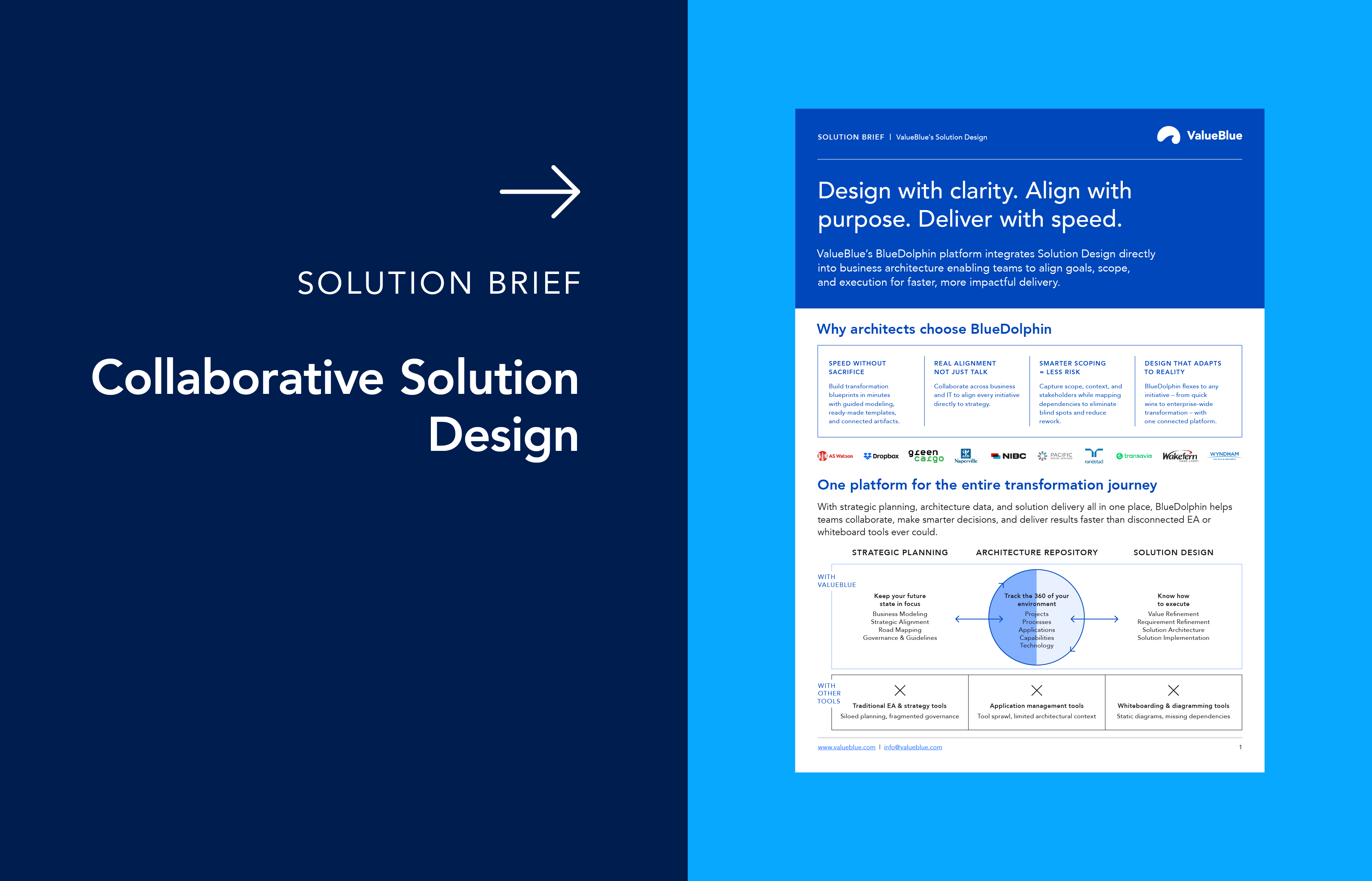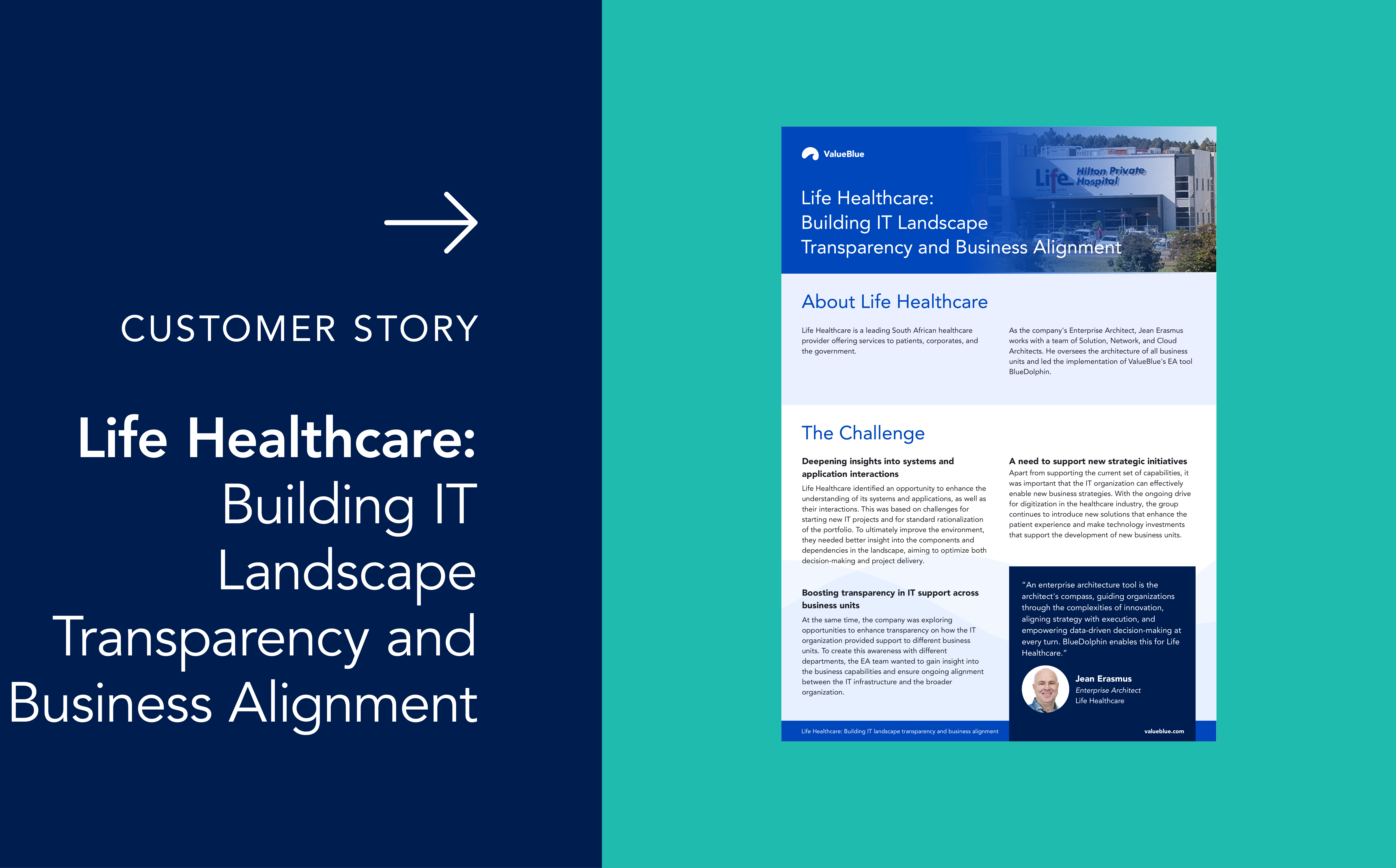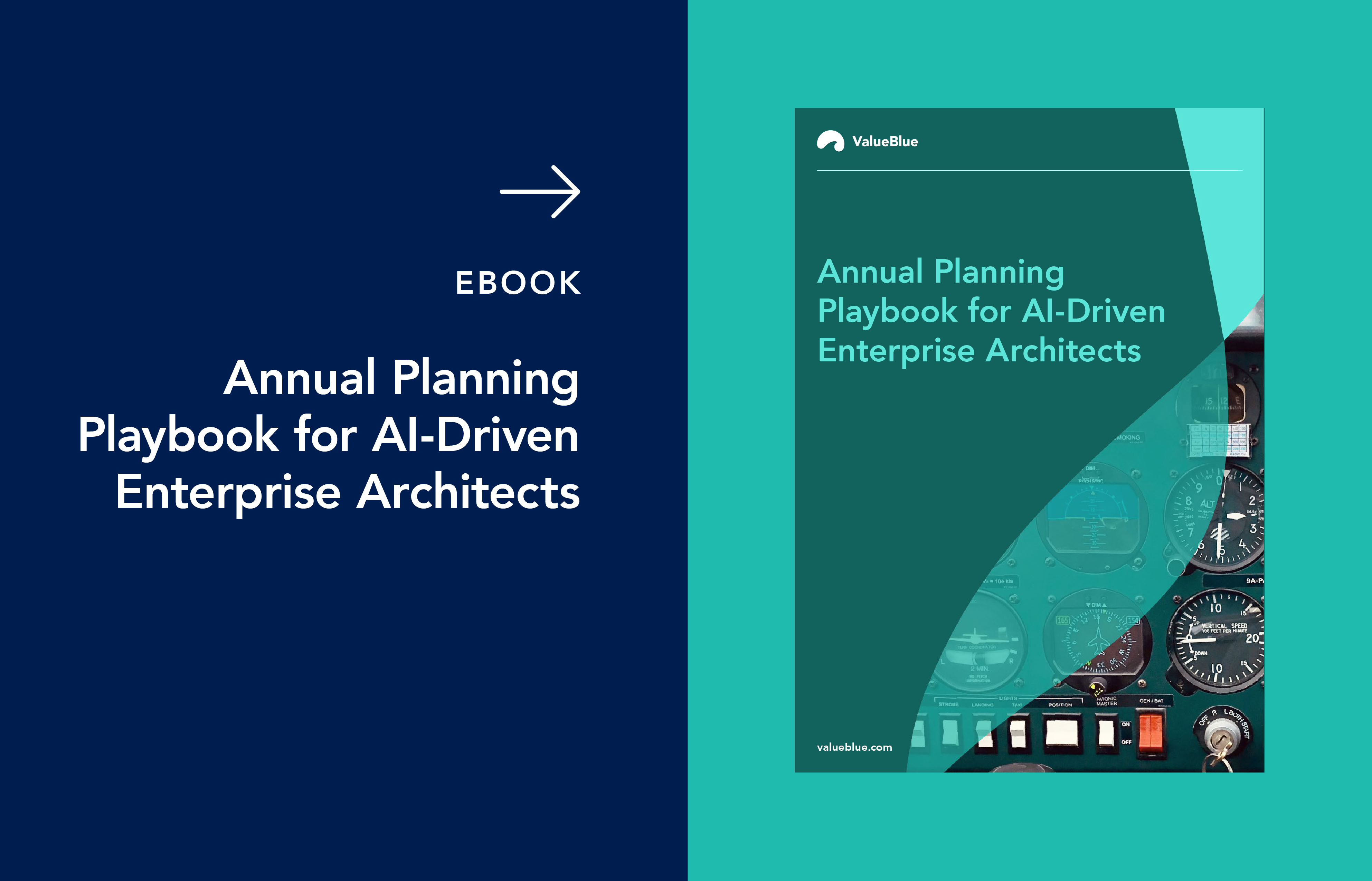Decoding Business Architecture: Definitions and Frameworks
In 2025, 91% of business leaders cite a lack of strategic clarity as the primary reason organizational plans fall short – yet most still struggle to connect high-level goals with day-to-day execution. Business architecture is the crucial link, offering a structured blueprint to bridge the gap between ambitions and results.
If you are a business leader, enterprise architect, or change agent, understanding business architecture is crucial to driving innovation and resilience. In this article, we explain what business architecture really means, show how major frameworks such as TOGAF® and Zachman approach it, and present practical examples that bring its benefits to life.
Table of contents
- Business architecture definition and meaning
- The role of business architecture in Enterprise Architecture
- Major business architecture frameworks
- Key elements and real-world examples of business architecture
- How business architecture drives transformation
- Best practices for developing business architecture
- Key takeaways
- FAQ
Business architecture definition and meaning
Business Architecture, as defined by the Business Architecture Guild, is a holistic discipline that provides multidimensional views of an enterprise – focusing on capabilities, value delivery, information, and organizational structure, along with their relationships to strategies, products, policies, initiatives, and stakeholders. It serves as an abstract representation of the business ecosystem, enabling organizations to translate strategy into actionable initiatives and foster effective, streamlined strategy execution.
At its core, Business Architecture delivers value by creating a common understanding across the organization, enhancing transparency, and enabling transformational change through its principles-driven, practitioner-focused framework. This discipline emphasizes business-driven priorities, iterative refinement, and reusable models, guiding organizations to align investments, reduce risk, and navigate complexity while facilitating stakeholder collaboration and informed decision-making using standardized practices and blueprints.
The role of business architecture in Enterprise Architecture
Business architecture plays a central role within the broader practice of Enterprise Architecture (EA), which includes Business, Application, Information, and Technology Architecture. Here, business architecture focuses on models, services, capabilities, and rules – anchoring technology and application choices in real business needs.
By formalizing business services and information flows, business architects help organizations define “what” they do and “how” they do it. These insights drive everything from IT transformation to customer experience redesign, providing leaders with an actionable roadmap for improvement and growth.
[Discover how to break down complex portfolios in "How to Break Down Complex Application Portfolios in 3 Steps"]
Major business architecture frameworks
Industry frameworks add rigor and scalability to business architecture. The two best-known approaches – TOGAF® and Zachman – offer different perspectives but share the objective of aligning business intent with operational capacity.
TOGAF® business architecture framework
TOGAF® – The Open Group Architecture Framework – is a leading method for developing and managing enterprise architectures. Within TOGAF®, business architecture is a core phase that forms the foundation for subsequent application, data, and technology decisions.
TOGAF® shines a spotlight on mapping business processes, capabilities, and services. It emphasizes defining value streams – those end-to-end activities that deliver products and services to customers – and supports business scenario planning to ensure that strategies are translated into actionable projects.
Enterprise architects using TOGAF® value clarity, consistency, and repeatability, allowing business architecture models to drive smarter investment and more agile transformation.
Zachman Framework
The Zachman Framework
is another core pillar. Rather than focusing on processes, Zachman is an ontology that organizes every component of business operations using six interrogatives: What, How, Where, Who, When, and Why.
This powerful framework helps business architects trace complexity from strategic goals to execution. Want deep traceability from purpose all the way to process? Zachman aligns all stakeholders in a structured, logical manner – and works particularly well for organizations where change and compliance are constant companions.
[Discover value refinement activities in Zachman and other frameworks in "Value Refinement in Solution Design: Making Enterprise Architecture More Valuable"]
OMG and complementary standards
The Object Management Group (OMG) provides supporting standards, including the Business Motivation Model, BPMN process notation, and Value Delivery Modeling Language, for strategy modeling, process visualization, and value stream mapping. These standards complement TOGAF® and Zachman by enhancing scenario analysis and modeling business objectives.
Key elements and real-world examples of business architecture
Business architecture rests on 5 critical elements:
1. Organizational Structure: How people, teams, and departments are arranged and who owns key processes.
2. Business Capabilities: What the business can do – such as order fulfilment, compliance, or customer onboarding.
3. Value Streams: The chain of activities delivering products or services and creating customer value.
4. Information Flows: Where data is generated, how it moves, and who uses it to inform decisions.
5. Strategy and Goals: The top-down vision that guides operational activity at every level.
Consider these 3 scenarios:
1. Technology: A software company launching subscriptions uses business architecture to define required capabilities, map the ideal customer lifecycle, and synchronize IT with marketing.
2. Manufacturing: Quality improvement begins with business capability mapping, connecting sensor data to analytics, and empowering frontline teams.
3. Financial services: A regional bank rolling out digital payments models, compliance, customer experience, and risk controls – layering them onto its existing framework for a streamlined rollout.
How business architecture drives transformation
Business architecture forms the backbone of organizational change through:
- Strategy execution: Transforms ambitious vision into operational projects with clear milestones.
- Digital transformation: Ensures IT innovation enhances actual business capabilities and outcomes.
- Operational excellence: Reveals inefficiencies and bottlenecks for targeted process improvement.
- Risk reduction: Clarifies reporting, strengthens governance, and smooths the path to compliance.
Decision-makers use architecture insights to establish transformation roadmaps, mobilize teams, and keep everyone focused on outcomes that matter.
Best practices for developing business architecture
Developing effective business architecture is rooted in inclusive collaboration. Bring together stakeholders from business, IT, operations, and compliance at the outset to ensure all perspectives shape the architecture.
Treat your business architecture as a living set of models – regularly refreshed to mirror new strategies or market shifts. Visualization matters: capability maps and process diagrams make information accessible and drive organizational buy-in. Leverage field-tested frameworks, including TOGAF®, Zachman, and OMG standards, to underpin your efforts with proven rigor. Throughout, record insights from your projects; revisiting these lessons helps refine your approach and plants the seeds for continuous improvement.
[Download actionable templates and case studies in the Business Capability Mapping Guide]
Key takeaways
- Business architecture connects strategy, capabilities, and operations to enable true transformation.
- Frameworks such as TOGAF® and Zachman provide the structure and scalability necessary for achieving effective results.
- Diverse examples – from technology launches to bank innovation – show practical business architecture in action.
- Success depends on collaboration, innovative models, compelling visuals, established frameworks, and continuous learning from real-world experience.
Start today!
Ready to elevate how your organization connects strategy to execution? Contact us today and learn how to empower your teams and drive business success with better architecture.
FAQ
1. What is business architecture?
Business architecture is a holistic blueprint that links an organization’s strategy, processes, capabilities, and structure, ensuring business outcomes truly align with the vision.
2. What is the TOGAF® business architecture framework?
TOGAF® business architecture guides organizations in designing and transforming operations so strategies become real-world capabilities.
3. What’s an example of business architecture in practice?
Launching new business models, such as subscription sales or digital payments, relies on business architecture to align capabilities, processes, and customer experience.
4. How does business architecture fit within Enterprise Architecture?
It defines business models, services, and information flows – the foundation that supports IT, technology, and data domains within the broader EA context.
5. Which frameworks support business architecture?
The TOGAF®, Zachman, and OMG frameworks provide structure, language, and best practices, supporting organizations as they model and execute their strategies.
Learn actionable steps to turn your IT landscape 
into a source of financial strength!
Download our free eBook and learn:
- How to increase visibility into your IT spend and identify inefficiencies.
- How to identify, assess, and eliminate redundant or low-value apps.
- How to optimize cloud resources and infrastructure, right-sizing and aligning assets to business needs.
- How to use project portfolio alignment to ensure IT investments support business goals and deliver maximum value.
- How to ensure ongoing governance for sustaining long-term value through recurring visibility and prioritization.





